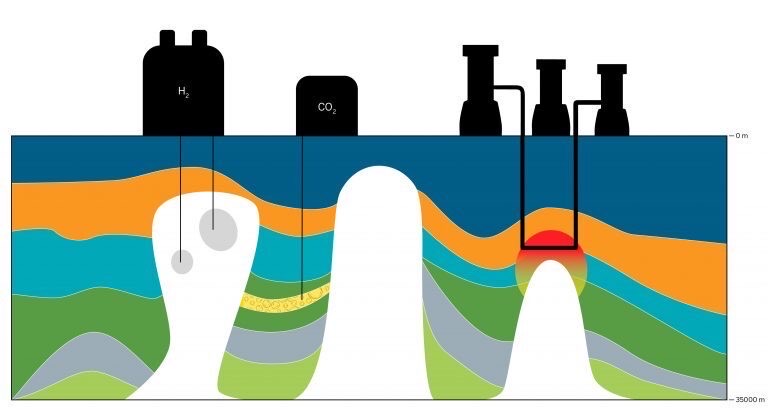UT researchers’ study highlights salt’s future in production of hydrogen, geothermal energy
March 7, 2023
UT researchers from the Jackson School of Geosciences published a study identifying salt as a possible way to facilitate more effective energy storage and controlled release.
The study, published last month by the University’s Bureau of Economic Geology, showed underground salt caverns act as hydrogen storage containers. Hydrogen is currently being looked at as a form of alternative energy, according to the U.S. Department of Energy, but storing and releasing hydrogen is difficult due to how light it is as a gas and its potential to escape from whatever vessel it is being kept in.
However, the new research suggests hydrogen can be both stored and then extracted for energy use through controlled release into the atmosphere via salt caverns.
“Salt caverns have been used for a variety of purposes, including hydrogen storage … for the petrochemical industry mainly,” said Lorena Moscardelli, director of the State of Texas Advanced Resource Recovery program. “It’s not new, but what’s new here is hydrogen storage being used for power generation, which is what we’re trying to better understand.”
Moscardelli said the study primarily revolved around exploring salt formations within West Texas and the Gulf Coast to see which areas were suitable for energy storage and extraction.
Bureau research scientist Oliver Duffy said energy research often looks to salt formations because that is where many oil and gas fields are located.
“The bureau has expertise in salt tectonics from salt basins around the world, so it’s not just local knowledge in Texas,” Duffy said. “It’s like leveraging knowledge around the world to Texas by blending the knowledge (State of Texas Advanced Resource Recovery) has and the work of the Applied Geodynamics Laboratory.”
In terms of hydrogen storage, there are only a handful of examples where hydrogen is stored inside salt caverns, Duffy said.
Along with storage of hydrogen for future extraction to use as fuel, the study also noted that salt formations can also be used as a source of potential geothermal energy.
“Salt as a rock is also more thermally conductive than surrounding rock,” Duffy said. “The hotter and hotter it is, the more geothermal energy there is, and when you get toward a salt dome you will have hotter temperatures at the dome than other rock at the same depth.”
Moscardelli said advancing technology has made generating geothermal energy and identifying potential regions of use much easier.
“There is a perception that science or engineers work for the oil and gas energy industries only,” Moscardelli said. “But moving forward in the diversification of energy, we will need a lot more geoscientists and a lot more engineers and funding to pursue the research that we need to advance this knowledge.”



